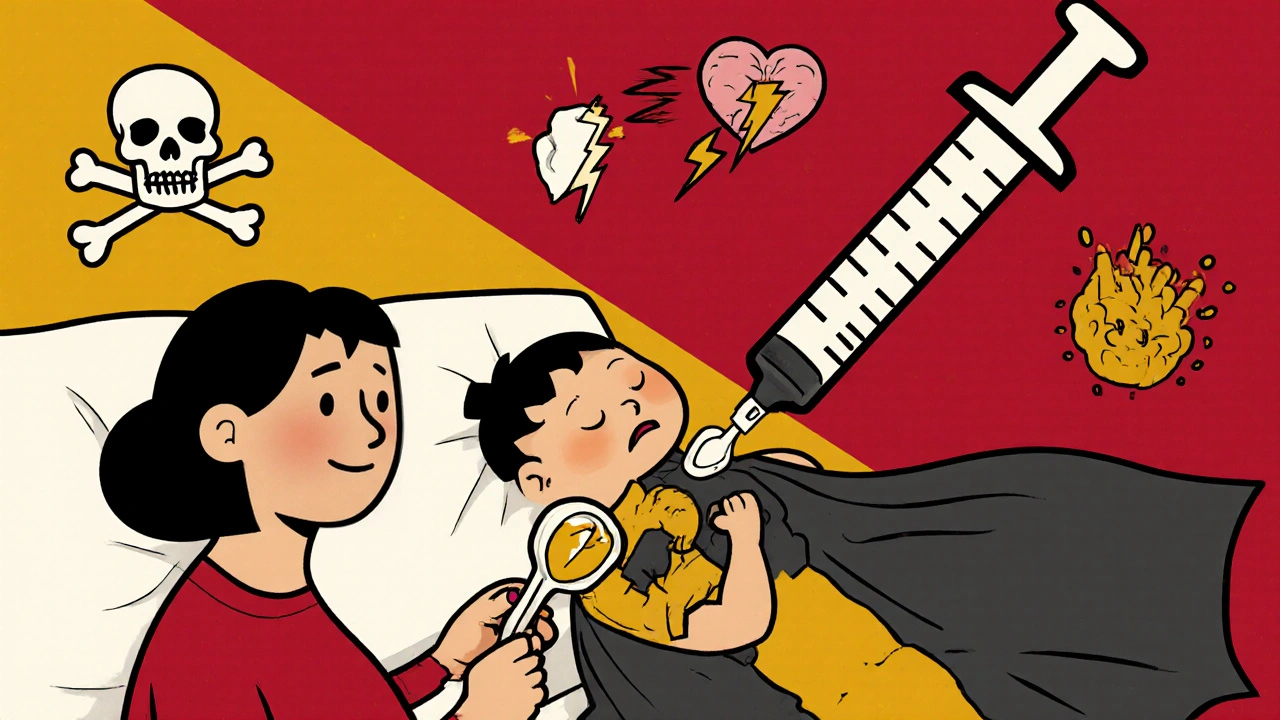Safe Kids Medication: What Parents Need to Know About Safe Drug Use for Children
When it comes to safe kids medication, the careful, informed use of drugs in children to prevent harm, overdose, or long-term side effects. Also known as pediatric medication safety, it’s not just about giving the right pill—it’s about knowing the right dose, the right time, and when not to give anything at all. Kids aren’t small adults. Their bodies process drugs differently, and a dose that’s fine for a teenager can be dangerous for a toddler. Every year, thousands of children end up in emergency rooms because of medication errors—wrong dose, wrong drug, or mixing medicines that shouldn’t be combined. This isn’t rare. It’s common. And it’s mostly preventable.
One of the biggest risks? over-the-counter kids meds, commonly used drugs like acetaminophen, ibuprofen, and cough syrups sold without a prescription. These are easy to grab off the shelf, but they’re also the most frequently misused. Parents often don’t realize that multiple cold medicines contain the same active ingredient. Giving two at once? That’s how accidental overdoses happen. Even children's drug dosing, the precise amount of medication based on weight or age, not just "a teaspoon for kids". Many caregivers rely on old advice or guesswork, but the truth is, a 30-pound child needs a different amount than a 50-pound one. And measuring spoons? They’re unreliable. Use the syringe that comes with the bottle—never a kitchen spoon.
Then there’s the hidden danger: giving adult meds to kids because "it’s the same thing." That’s how accidental poisonings start. A single adult aspirin can cause Reye’s syndrome in children. A dose of ibuprofen meant for an adult can damage a young liver. And don’t assume natural means safe—herbal supplements, essential oils, or home remedies can be just as risky. The FDA doesn’t regulate them like drugs, so you’re flying blind. Even vitamins can overdose kids if taken daily in high doses. Iron supplements, for example, are the number one cause of fatal poisoning in children under six.
What does safe kids medication really look like? It’s writing down every drug your child takes, including supplements. It’s checking with a pharmacist before mixing anything. It’s storing all meds out of reach and in childproof containers—not just locked cabinets, but high up and out of sight. It’s never using medication as a sleep aid or to calm a child down. And it’s asking: "Is this really necessary?" Too often, we reach for a pill for a fever that’s going away on its own, or a cough that’s just part of a cold. Sometimes, the safest medicine is no medicine at all.
You’ll find real stories here—parents who learned the hard way, doctors who’ve seen the results of mistakes, and clear guides on what to avoid. Whether you’re dealing with a fever, an ear infection, allergies, or just a fussy child, the posts below give you the facts without the fluff. No jargon. No scare tactics. Just what works, what doesn’t, and how to keep your child safe when medicine is involved.

